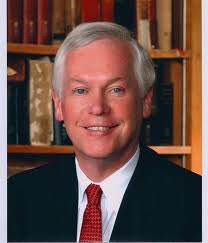
In America, it’s a “scorecard” whether pitched by US News & World Report to increase revenue or the Obama Administration in a misguided but good faith effort to use research of varying standards to rate quality.
There are many different types of institutions offering different education models. But when consumers think about college, the first image that comes into the mind of many is that of the residential liberal arts college.
Let’s look at this descriptive language, beginning with the idea of the “liberal arts.”
In most staff and faculty meetings that I have been privileged to attend, the term “liberal arts” is a broad brush definition that speaks to the value of a well rounded education that prepares students to lead purposeful lives. The problem today is, however, that no one responds to a definition so broad that it lacks specificity. American consumers find it hard to find what the “it” of the definition is.
It’s hard but entirely necessary for those of us who believe that the liberal arts prepares us to think globally, learn from the past, and anticipate the future to accept that the best case for the liberal arts may be to restate the definition more pragmatically.
By illustration, the scorecard ratings are a bad use of the training provided by a liberal arts education. Good intentions can sometimes suffer from sloppy research. A better use of liberal arts training –setting the politics aside – would produce better scorecards.
American educators must now likely find other ways to defend the liberal arts tradition before scorecards demean the integrity of the effort. The liberal arts are, after all, the foundation of the programs developed by American higher education, no matter where the programs are offered in a profit- or non-profit setting.
Perhaps we should simply state what we do and let our actions speak for themselves. The liberal arts train us to think by teaching us to articulate, write, apply quantitative methods, work in a collaborative setting, and use technology. What employer wouldn’t benefit from employees so well trained?
Of course, the trick is to do this job well. And this is where colleges fail sometimes, notably by their unwillingness to see the value of outputs – especially timely and meaningful employment after graduation – as vital to the defense of the liberal arts.
The second problem embedded in the language is the “Animal House” perception of residential life. Higher education officials came late to an understanding that students benefit from the thousand teachable moments that occur outside the classroom. They were slow to translate from residential life as a housing “numbers” dilemma to a comprehensive wellness program that reinforced the academic enterprise.
Further, the American consumer’s perception of the downside of residential life is a mind’s eye image of Dean Wormer forcing society’s standards on the Delta House fraternity. The images of “drug,” “jock,” and “Greek” schools predominate, with accuracy sometimes, in lore, literature and fact.
Perhaps this is where American higher education has the most work ahead of it. While most colleges and universities have added a full range of athletic offerings, community service programs, psychological counseling, and a host of other service categories to their student life programming, they have failed to be intentional about residential life.
Many institutions boast in their literature and websites about how many programs they offer as part of the student life offerings at the institution. The fact is that there may be too many and that those that exist may be poorly advised or funded. Sometimes more is just more.
If costs are to be constrained, it may be better to ask a fundamental first question – what is the purpose of residential life and how does it support the academic program?
And that’s the problem at many colleges and universities. They provide the programs – hundreds of them at some places – without first defining the experience that they provide to serve the academic program. At some institutions, higher education leadership focuses on values and principles without providing direction or linking the principles intentionally to the program offerings.
Here’s a suggestion. In a best-case scenario, students attend colleges and universities for four years. Begin by teaching students how to live together in a community. As they move to upper division years, provide more options and prepare them to live on their own.
To do so, it will be necessary to move beyond linking student experience to the housing supply. Instead, colleges and universities must enforce a social contract, clearly delineating residential life policy, their expectations, and predicted and quantifiable outcomes.
The effect will be to differentiate the residential life program that supports the academic enterprise. And the most important outcome will be that in a residential liberal arts setting students will be taught important skills to complement their discipline training while participating in a campus community that is preparing them to leave from the moment that they set foot on campus.
It’s important for American colleges to make the case for a learning experience that speaks as much to the college experience as the preparation college provides for even bigger adventures ahead. If the outcomes are clearly defined, it’s likely that the American public will understand and embrace it.
Dr. Brian C. Mitchell is president of Brian Mitchell Associates and a director of the Edvance Foundation. He is a retired president of Bucknell University and former president of Washington & Jefferson College.


















